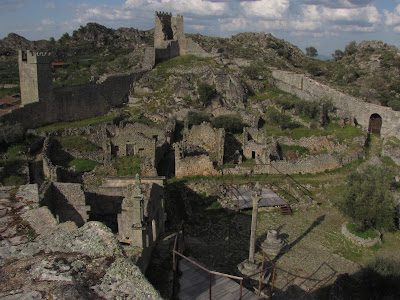Wow!
I thought I would take a break over the summer from blogging and that bled over into the fall and here I am, in November, not having posted since June!
A lot has happened since then, and I will skim over that just to bring you up to date. It just wasn't all that exciting to blog about and besides, it was summer. Who pays attention in summer?
In July I pencilled, inked and toned the last page of Blood and Fire, and if you haven't seen it, here is a little celebratory video I did to mark that event.
 |
| Click on the image above to go to this one minute video. |
The rest of my summer was spent converting the Blood and Fire art to duotones, marrying the text with the art and generally getting things in shape for sending the book off to my publisher at Renegade. I also gave time to learning how to work in Affinity, a great suite of programs that has allowed me to cut the strings with greedy Adobe as it can be wholly owned at a fraction of the cost. And then coming back from holidays in the Açores in October I did the final assembly and sent it off. So done, done and done! Blood and Fire, the third and last in the Mordecai Crow trilogy, will be out next spring - stay tuned!
New directions..
Knowing that the series was coming to an end, my mind has been drifting elsewhere for the past few months, thinking about what I wanted to tackle next. Ideas started to gel around some sort of story that dealt with artificial general intelligence (AGI, robotics capable of functioning at the same level or higher level as humans, across a wide range of cognitive tasks). Of course, most of the world was thinking the same thing, that omigod moment when we were introduced to chatgpt, but I wanted to explore this theme through the pages of a graphic novel.
I spent a lot of my spare time in the spring and summer reading books and watching videos, not so much around the science of it but rather the ethical and moral implications of humans developing this technology. Fiction, especially, is my go to for this sort of research, with Kazuo Ishiguro's Klara and the Sun and Ian McEwan's Machines Like Me giving me a whole lot to think about.
So as the summer wore on, a plot outline gradually began to take shape. Like so many good ideas, the story really had its genesis in an image I had drawn a few years ago, an image that was not my own but came from the fertile imagination of my partner Esperança when we were discussing a possible painting that we might work on together - something we have done on a few occasions in the past.
 |
| From my sketchbook a few years ago, the quick concept I roughed out based on Esperança's idea. |
I knew I didn't want this new story to be futuristic sci-fi. This is more a visual thing, me not really liking to draw straight lines and shiny objects, so decided to set the story in the 1930's. That makes it sound like an alternate universe or steam-punk themed, but this story will probably fail to fall into any obvious genre (never a good idea when writing a graphic novel because readers seem to love and define themselves by their genres!) But to make a long story (and it is a long story, I'm guessing clocking in at 260 pages or so at the moment) short, over my holidays I managed to get a pretty good draft down and I'm really excited about where all of this is going.
So let me introduce you to Boltz. I'm confident you will be seeing a whole lot more of him in the months and years to come here on my blog. I look forward to sharing this new journey with you as it unfolds.
 |
And the newsie bits...
Secrets of Jarrow wins big at Alberta Publishing Awards
I was thrilled to find out that Secrets of Jarrow won three of the four categories it was nominated in at the 2024 Alberta Book Publishing Awards in September.
• Graphic Novel of the Year
• Book Illustration
• Mystery and Thriller Book of the Year
https://bookpublishers.ab.ca/programs/awards/#A2
Signing at The Mercantile in Millbrook, Sunday December 1, 1-3 p.m.
I will be chatting with friends and fans and signing copies of Secrets of Jarrow and Quid Pro Crow at the Mercantile in downtown Millbrook on Sunday, December 1. If you are in the area drop by and say hello - it's a great chance to pick up a couple of graphic novels as Christmas gifts for the comic book lover in your family and check out all the great Christmas gift offerings at the Mercantile. Thanks to Bernadette and Lance for carrying my books locally and inviting me to hang out at their store.



































.jpg)





